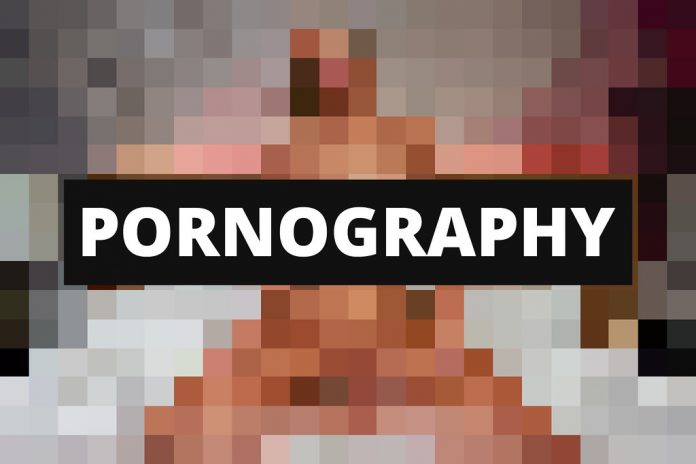This article is written by Nidhi Chhillar, a student of Vivekananda Institute of Professional Studies, GGSIPU. In this article, she has discussed Cyber Pornography and legal provisions related to Cyber Pornography in detail. She has discussed the liability of service providers, problems faced in the regulation of Cyber Pornography and has provided suggestions for regulating Cyber Pornography.
Table of Contents
Introduction
Cyber Pornography has become a global problem. The government has decided to ban 827 websites that possess pornographic content following the order of Uttarakhand High Court. However, the people especially the youngsters, are so addicted to cyberporn that they try different means like VPN, DNS Server Change, or downloading Opera Mini that has inbuilt VPN activation, to view cyberporn.
Can a person be made liable for watching porn on websites that are banned? Can the service providers be made responsible for publishing pornographic content? Are the laws sufficient to regulate cyberporn?
Pornography
The word pornography is derived from two Greek roots, i.e. “Porne and graphos”. The word “porne” means prostitute, harlot or female captive, and the word “graphos” means “writing about” or “description of”. In a legal sense, Pornography means “obscenity”. Pornographic includes any video, pictures or movies that contain sexually explicit acts that are considered indecent by the public.
The term pornography is used to the depiction of the act rather than the act itself, and therefore, it does not include live exhibitions like sex shows and striptease. Those who favour or patronise pornography often contend that it is the artistic exhibition of one’s body while on the other hand, the people who criticize pornography calls it immoral and against their religious sentiments.
In the modern era, the concept of pornography has been widened. Pornography has now been categorized into softcore pornography and hardcore pornography. The only point of difference between softcore pornography and hardcore pornography is that softcore pornography does not depict penetration, while hardcore pornography depicts penetration.
Cyber Pornography
Cyber Pornography means the publishing, distributing or designing pornography by using cyberspace. The technology has its pros and cons and cyber pornography is the result of the advancement of technology. With the easy availability of the Internet, people can now view thousands of porn on their mobile or laptops, they even have access to upload pornographic content online.
Obscenity and Pornography
Obscenity and Pornography are often used synonymously. But it should be noted that obscenity is a wider concept than pornography. Obscenity means anything which is immoral and against the sentiments of people, whereas pornography refers to the act of causing sexual excitement through films, pictures or books. Thus, pornography is just a part of obscenity.
Porn Content
- 30% of Internet content is porn. One can get abundant access to pornographic content on the dark web. Dark web even contains the child pornographic contents. It is worthy to note that only 10% of the total content is available on the surface web, the rest of the content is available on the dark work and the deep web.
- In the year 2005, there were more than 2 billion searches for porn.
- Almost 20% of the mobile phone searches are for porn.
- 28,258 users watch porn every second.
- 90% of boys and 60% of girls watch porn by the time they turn 18.
Porn Revenue
- The pornography industry is the fastest growing industry. It is estimated to be worth approximately $60 billion in the year 2007.
- The U.S. is the world leader in the pornography industry. It spends $12 billion on porn followed by Australia, which generates $1.5 billion revenue from porn sites.
Porn rise
- Easy access to the Internet has helped the people to view pornographic content without compromising their privacy and without disclosing their identity to anyone.
- It has removed the hurdles of the conventional form of pornography, where people used to buy the pornographic content in printed form, the people nowadays, can view the content without any fear of being caught by someone.
- Easy accessibility to sites that offer porn content for free.
Effects of Pornography
Many surveys reveal that a person who is addicted to pornography has a change in attitude towards himself and his family.
- Pornography which is usually viewed in private often leads to deception in marriage and which may, later on, affect their family life.
- It may lead to adultery, prostitution and many unreal expectations that can result in dangerous promiscuous behaviour.
- Pornography may lead to addiction, escalation, desensitization and acting out sexually by one person.
Legal Framework
There are various legislations to regulate Cyber pornography in India, like the Information Technology Act, 2000, Indian Penal Code, Indecent Representation of Women’s act and Young Person’s (Harmful Publication) Act. The provisions related to cyber pornography under these acts are discussed below.
Information Technology Act, 2000
Cyber pornography is banned in many countries but legalized in some. Cyber Pornography is neither banned nor legalised under the IT Act, 2000. The IT Act prohibits the production and distribution of cyber pornography but does not prohibit the viewing or downloading of pornographic content if it is not child pornography.
Section 67 of the Information Technology Act, 2000 makes the following acts punishable with imprisonment up to 3 years and a fine up to 5 lakhs:
- Publication– It includes uploading of pornographic content on a website, WhatsApp group or any other digital portal where third parties can have access to such pornographic content.
- Transmission– It means to send obscene material to any person electronically.
- Causing to be published or transmitted– It is a comprehensive terminology which would end up making the intermediary portal liable, using which the offender has published or transmitted such obscene content. The Intermediary Guidelines under the Information Technology Act put an onus on the Intermediary/Service Provider to exercise due diligence to ensure that their portal is not being misused.
Section 67A of the Information Technology Act makes publication, transmission and causing to be transmitted and published any material containing sexually explicit act or conduct punishable with imprisonment up to 5 years and a fine up to ₹10 lakhs.
Following conclusions can be made by understanding the above provisions:
- Viewing Cyber pornography is legal in India. Merely downloading and viewing such content does not amount to an offence.
- Publication of pornographic content online is illegal.
- Storing Cyber pornographic content is not an offence.
- Transmitting cyber pornography via instant messaging, emails or any other mode of digital transmission is an offence.
Exceptions
The section 67A of the IT Act does not prohibit books, pamphlets, magazines or pictures which are created for educational purposes or which is kept for religious purposes. Thus, the section does not prohibit the preserving of sculptures that are of historical importance.
Child Pornography
Section 67B of the IT Act, 2000 makes it publishing, transmitting, viewing or downloading child pornography illegal. The fact that the internet has made child pornography more accessible to the distributors, as well as the collectors, cannot be denied.
According to Section 67B, any person who has not attained the age of 18 years is a child. It further states that child pornography can be committed in the following five ways:
- By publishing or transmitting or causing to publish or transmit any material electronically that depicts the children engaged in a sexually explicit act or conduct.
- By depicting children in an obscene or sexually explicit manner.
- By inducing children to online relationship with one or more children for and on a sexually explicit act, or in a manner that may offend a reasonable adult on the computer resource.
- By facilitating child abuse online.
- By recording own abuse or that of others pertaining to sexually explicit act with others.
Exceptions
The section does not prohibit the books, pamphlets, magazines or pictures which are created for educational force or which is kept for religious purposes. Thus, sexology (the scientific study of human sexuality or sexual behaviour) is not prohibited under this section. Similarly, if a photograph of a child is used to tell about the anatomy of a child then it won’t constitute an offence under this section.
Indian Penal Code, 1860
Section 292 of IPC prohibits the sale of obscene material. Section 292(1) explains the meaning of “obscenity” and Section 292(2) explains the punishment for sale, distribution, etc. of obscene materials.
Section 292(1) states that any material will be deemed obscene if it is lascivious or prurient or any part of the material has the tendency to corrupt or deprave the people.
Section 292(2) states that a person who:
- Sell, distributes, lets to hire, publicly exhibit or put into circulation any obscene material.
- Imports or exports obscene material or knows that such material will be put for sale, distribution or circulation.
- Is involved or receives profit from any business in the course of which he has knowledge or reason to believe that such obscene objects are for aforesaid purposes.
- Advertises the obscene material.
- Offers to do or attempts to do any act which is prohibited under the section.
On a first conviction, such a person shall be awarded either simple or rigorous imprisonment that may extend to 2 years along with a fine that may extend to ₹2,000. On the second conviction or person, such a person shall be awarded simple or rigorous imprisonment that may extend to 5 years along with a fine that may extend to ₹5,000.
Section 293 of Indian Penal Code, 1860, specifies the punishment for a person who sells, lets to hire or distributes any obscene object to any person who is below the age of 20 years. It states that on the first conviction a person shall be awarded imprisonment which may extend to 3 years along with the fine which may extend to ₹5,000 and on subsequent conviction, with imprisonment which may extend to 7 years along with the fine which may extend to ₹5,000.
Indecent Representation of Women’s Act, 1986
Indecent Representation of Women’s Act, 1986 seeks to prohibit the representation of women or any part of her body in an indecent form provided that such representation will injure the public morality or morals.
POCSO (The Protection of Children from Sexual Offences) Act, 2012
The POCSO Act, 2012 was specifically enacted to prevent children from sexual offences. The act protects children from sexual assault, sexual harassment, and pornography. The act aims to protect the interests and well-being of the children. For the purpose of the act, any person who has not attained the age of 18 years is a child. The Act is gender-neutral.
The provisions relating to Cyber Pornography under the POCSO Act are discussed below:
Section 13 of the POCSO Act, 2012, defines the offence of child pornography, it states that whosoever, uses a child in any form of media for the sexual gratification shall be guilty of the offence of child pornography.
Section 14 of the POCSO Act, 2012, provides the punishment for using a child for pornographic purposes.
Punishment for using a child for pornographic purposes
|
Offence |
POCSO Act, 2012 |
2018 Bill |
|
Use of a Child for Pornographic purposes |
Maximum: 5 years |
Minimum: 5 years |
|
Use of a child for the pornographic purposes resulting in penetrative sexual assault |
Minimum: 10 years Maximum: life imprisonment
|
No Change |
|
Use of a child for the pornographic purpose resulting in aggravated penetrative sexual assault |
Life Imprisonment |
Minimum: 20 years Maximum: Life imprisonment or death |
|
Use of a child for the pornographic purposes resulting in sexual assault |
Minimum: 6 years Maximum: 8 years |
Minimum: 3 years Maximum: 5 years |
|
Use of a child for the pornographic purposes resulting in aggravated sexual assault |
Minimum: 6 years Maximum: 10 years |
Minimum: 5 years Maximum: 7 years |
Sources: The Protection of Children from Sexual Offences (Amendment) Bill, 2019; The Protection of Children from Sexual Offences Act, 2012: PRS
Section 15 of the POCSO Act, 2012, provides that if a person stores pornography that involves a child, in any form then he shall be awarded imprisonment which may extend to 3 years or fine or both.
Liability of Internet intermediaries
Intermediary Meaning
In the context of the Internet, Intermediaries can be understood as an entity that works as the facilitator of the flow of data. It can either refer to the TSP (Telecom service provider) or ISP (Internet service providers) that provide internet services to the users or host the web and provide the server that stores the data. Intermediaries play a crucial role in society that is dependent upon the internet.
Section 2(1)(w) of the Information Technology Act, 2000 defines intermediaries. It states that intermediary with respect to any particular record refers to:
- any person who receives the information on behalf of another person,
- Stores or transmits the record or provide services for the record
- Includes telecom service providers, internet service providers, search engines, online auction sites, online marketplaces, web hosting service providers and cyber cafes.
Liability of Intermediaries
Intermediaries liability refers to the extent of the liability of intermediary for the content prohibited by law. It is the consensus that intermediaries often don’t have control over the content, but it is the users who have control over the content or it is the users who publish illegal content on the website rather than the intermediaries, it is argued that in that case, it will be inequitable to make the intermediaries liable rather it should be the user who should be made liable for publishing illegal content unless the intermediaries have considerable editorial control over the content.
Section 79 of the IT Act provides that the Intermediary will not be liable if:
- The intermediary has observed due diligence and certain guidelines issued by the Central Government
- The intermediary has not conspired, abetted, aided or induced the commission of an unlawful act
- The intermediary had taken down the unlawful content after having “actual knowledge” of the illegality of the content or after being notified by the government.
Why is Cyber Pornography difficult to regulate?
It isn’t as easy as it seems to regulate Cyber Pornography. It is really difficult to regulate Cyber Pornography. Some of the reasons for the same are:
- The Internet is a global network, connecting various computers. It is highly decentralized i.e. no single entity has control over the content published on the Internet.
- People can use proxy servers to access pornographic content on the Internet. Thus, they can even access banned websites by using proxy servers.
- There are a large number of servers on the Internet that contains pornographic content. It is highly difficult to regulate such a large number of servers.
- Adult websites are not the only way to download porn. There are other communication protocols that the Internet users follow to download the pornographic content, say, for example, if a website is banned, the users may download porn by using Bit-Torrent technology. Similarly, peer-topper networks such as eMule or Bulletin Boards can be used to download and share files, including porn.
Suggestions for Regulation of Cyber Pornography
Adult-oriented top-level Domains
The use of top-level Domains (TLD) may be an effective way to control pornography in the Cyberworld. TLD is the identifier that comes after “dot” in an Internet address. For example, in “yahoo.com”, “com” is the TLD, similarly in “wikipedia.org”, “org” is the TLD. Initially, the Internet was used for military purposes and thus, there were very few computers connected to the Internet, each computer was recognised by its IP (Internet Protocol) address.
Also, as the number of computers and internet users increased, the network became burdensome and thus, the need was felt for designing a new system that used hierarchical database structure. This hierarchical database structure allowed for two domains viz. Top-level domains and second-level domains. Second-level domains are registered under the Top-level domain itself.
It would be easier to filter pornographic content if the service providers opt to force their registrants to register themselves only under the domain for which the website is created. For example, using the TLD “.xxx” or “.sex” for adult websites. This will help in filtering the pornographic content, as the filtering software will need not to filter the keywords but only the TLP’s.
- Credit Card Verification
Another method to regulate cyber pornography can be the use of a credit card to verify the age of the viewer. The operators can ask for a credit card number to verify that the viewer is not a minor.
- Parental Control
Another effective method to regulate pornographic content is the parental control of what minor can access on the Internet. This method involves the use of software which restricts the websites that contain certain keywords. Parents can use such software to screen out certain websites.
- Issuing Digital Certificates
Yet another effective method to regulate cyber pornography is the issuing of Digital Certificates. Digital Certificates resides in the hard drive of the users, it provides all the details about the user including his age. Therefore, if a user will enter a website then the website will automatically check the information of the user and permit only the users who are above the age of 18 years.
Judicial Trends
Avinash Bajaj v. State (N.C.T.) of Delhi [1]
FACTS: An obscene video titled “DSP Girls having fun” was uploaded by a user (Ravi Raj, a student of IIT Kharagpur) on the website bazee.com. The MMS was posted on the website around 8:30 pm of 27 November 2004, which was deactivated around 10 am on 29 November 2004.
An F.I.R was also lodged against the bazee.com for putting on sale the obscene material. The CEO of bazee.com, Avinash Bajaj was arrested by the police under Section 67 of the IT Act. Since Ravi Raj (the user who uploaded the MMS) absconded, Avinash Bajaj file a petition, seeking the quashing of criminal proceedings.
HELD: The CEO of bazee.com was released on bail subject to furnishing of two securities in the sum of ₹1,00,000. The accused was also directed not to leave India without the permission of the Court. He was also directed to participate and assist in the partnership.
State of Tamil Nadu v. Dr L. Parekh [2]
FACTS: Dr L. Parekh was a reputed medical practitioner who had contributed more than 120 research paper, all of them were published in a reputed medical journal. The doctor was arrested and sentenced to life imprisonment in a case about online obscenity. The accused filed a writ petition to give him all the facilities as a “special class prisoner”.
HELD: The court dismissed the writ petition of the accused and denied any special class treatment to the accused.
State of Tamil Nadu v. Suhas Katti [3]
FACTS: The accused (a family friend of the victim) was interested in marrying the victim but the victim married another person. The marriage of the victim could not last long and ended up in divorce. The accused again started to contact the victim but the victim refused to have any contact with the accused. The accused then started sending annoying emails to the victim.
HELD: The court found the accused guilty under section 67 of the IT Act, 2000, and was, therefore, awarded the rigorous imprisonment of 2 years along with a fine of ₹4,000 under the IT Act.
Conclusion
The presence of the Internet has increased the menace of cyber pornography. Although, there are various provisions which prohibit the publication and circulation of cyber pornography, viewing of cyber pornography is not illegal unless it is child pornography. Intermediaries won’t be liable for any unlawful publication made by the users provided that they were diligent and had not abetted the cybercrime.
The main problem which is faced by the government is to regulate cyber pornography effectively. Minors can easily access pornographic material with the help of the Internet. The most effective method to curb the menace of cyber pornography is an attempt by the state to attain social maturity through education and then the rest should be left upon the individual’s choice, as to what he wishes to see.
The parents have to play an important role to control the activities of their children on the Internet, they need to educate the children and help them as a friend.
To know more about legal recourse in India, please Click Here.
References
- 2005 (79) DRJ 576
- Writ Petition No. 7313 of 2002 and W.P.M.P.No. 10120 of 2002
- State of Tamil Nadu vs. Suhas Katti, 2004, Some Indian case studies, 2010-11, available at wwwcyberlawclinic.orf/case study.asp
- https://www.psychologytoday.com/us/blog/all-about-sex/201611/dueling-statistics-how-much-the-internet-is-porn
- http://www.covenanteyes.com/pornstats/
- https://pdfs.semanticscholar.org/d5ac/9d42834942df20b7224d4c45831cd487ce91.pdf
- http://endsexualexploitation.org/wp-content/uploads/NCOSE_Pornography-PublicHealth_ResearchSummary_8-2_17_FINAL-with-logo.pdf












